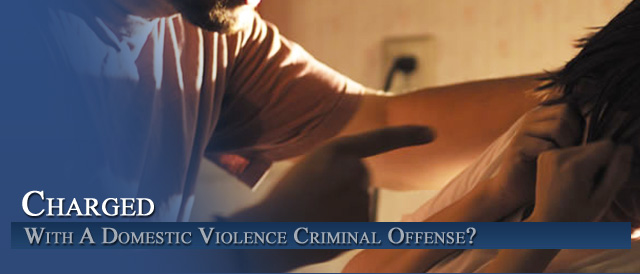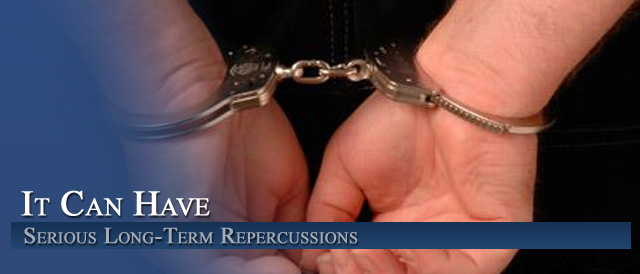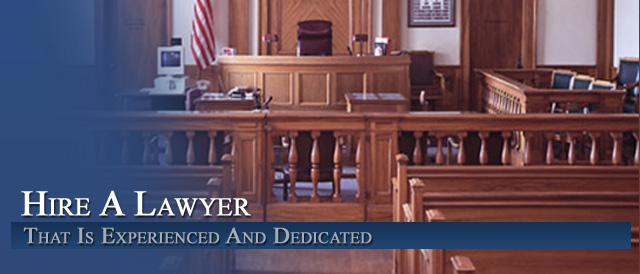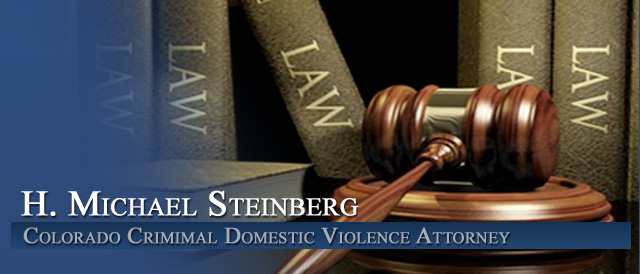




FAQ: Colorado Restorative Justice – The Concept Behind A New Way Of Looking At Colorado Criminal Sentencing – Can It Work?
Colorado has recently passed path breaking legislation allowing the use of Restorative Justice Principles to bridge the gap between victims of crime and those who are prosecuted it. I have watched for 40 years as the Colorado Criminal Justice System – as an adversarial system – has taken a bad situation and made it much worse. Restorative justice can help temper the natural desire for retribution and revenge with an understanding of human compassion – it helps to heal the parties involved in a criminal act and brings understanding where there has been only hate and anger.
Restorative Community Justice is a way of responding to conflict, misbehavior and wrongdoing that makes things as right as possible for all who were impacted. Restorative Justice recognizes the conflict or harm, repairs the damage (physical and relational) as much as possible and creates future accountability plans and/or agreements that will prevent the same thing from happening again. These principles guide our actions in response to wrongdoing, misbehavior and conflict and in our response to them.
Colorado Restorative Justice Focusing on Victims
Restorative justice calls for victims to be central to justice. Restorative justice programs appear to have significant potential for addressing victim concerns and needs. Restorative justice offers a hopeful vision of justice for victims but good intentions and wonderful ideas are not enough. Substantial challenges must be met if this vision is to prove a reality rather than a mirage. Restorative justice suggests that we need to change our lenses requiring us to change our questions.
Justice requires that we start with victims:
1.Who has been hurt?
2.What do they need?
3.Whose obligations and responsibilities are these?
Colorado Restorative Justice Focusing on Harm
Restorative Justice:
•Focuses on the harm.
•Wrongs or harms result in obligations (accountability vs. punishment).
•Promotes engagement and participation to put things right:
Address harms
Address causes
Restorative Justice balances concern for all
What Restorative Justice is NOT:
•Mediation
•Primarily about forgiveness and reconciliation
•Primarily designed to reduce recidivism or repeat offenses
•A program or a blueprint
•Primarily intended for comparatively minor offenses or first time offenders
•New, nor was it developed in North America (native people of North America and New Zealand)
•The panacea or necessarily a replacement for the legal system
•Necessarily a replacement for prison
“Only when we allow such questions to frame our quest for justice will victims attain the place they deserve.” ~Howard Zehr
Colorado Restorative Justice Values and Principles
Restorative Justice is not a specific program but rather a way of practicing justice that embraces the following values:
Respect. All those involved in the crime or conflict are provided with opportunities for input and participation in the justice process as early and fully as possible. It recognizes that diverse points of view are critical to the creation of wise, effective decisions. We recognize the integrity of individuals and the reasons for their perspectives. Support is made available to the parties as they clarify their needs and participate in a restorative plan of action.
Repair. Crime and conflict is a tear in the social fabric. The concept of justice includes restoring the health and healing of individuals and communities through a reasonable plan of accountability to repair the harm to the fullest extent possible. Justice requires an opportunity for healing and repair. The concept of justice includes the perspective of restoring the health of individuals and communities through a reasonable plan of accountability. It is the community, which ultimately must oversee this endeavor.
Responsibility. We each share responsibility for the members of our community. Offenders are accountable to the victim and the community for their actions. We recognize that our actions, thoughts and attitudes affect others and that we are responsible to act for the greater good.
Reintegration. The community takes an active roll in integrating all those involved in the crime or conflict with the community. Victims receive the services and resources needed as a result of the crime. They help the offenders successfully complete obligations associated with making amends to the victim and the community.
Relationship. Victims, offenders and community members all must be provided with opportunities for input and participation in the justice process as early and as fully as possible. Each party is entitled to be heard and included in the development of a plan of action in an expeditious manner respectful of their needs. Safety and fairness are essential parameters in every process.
Restoration. We recognize the integrity of every person and the reasons for their perspective. Support must be made available to each party as they clarify their needs and participate in a restorative plan of action.
Colorado Restorative Community Justice Practices
Victim-Offender Mediation. Victim Offender Mediation (VOM) involves a meeting between the victim and offender facilitated by a trained mediator. With the assistance of the mediator, the victim and offender begin to resolve the conflict and to construct their own approach to achieving justice in the face of their particular crime. Both are given the opportunity to express their feelings and perceptions of the offense (which often dispels misconceptions they may have had of one another before entering mediation). The meetings conclude with an attempt to reach agreement on steps the offender will take to repair the harm suffered by the victim and in other ways to “make things right”.
Participation by the victim is voluntary. The offender’s participation is usually characterized as voluntary as well, although it should be recognized that offenders may “volunteer” in order to avoid more onerous outcomes that would otherwise be imposed. Unlike binding arbitration, no specific outcome is imposed by the mediator. Instead, the mediator’s role is to facilitate interaction between the victim and offender in which each assumes a proactive role in achieving an outcome that is perceived as fair by both.
Family/Community Group Conferencing. Family/community group conferencing enlarges the number of participants in the process to include family members, supporters and other community members. There may be individuals from the staff or system present as well. It involves the people most affected by the crime–the victim and the offender as well as the family, friends, and key supporters of both–in deciding the resolution of a criminal incident. These affected parties are brought together by a trained facilitator to discuss how they and others have been harmed by the offense and how that harm might be repaired. To participate, the offender must admit to the offense. Participation by all involved is voluntary. The facilitator contacts the victim and offender to explain the process and invites them to the conference; the facilitator also asks them to identify key members of their support systems, who will be invited to participate as well.
The conference typically begins with the offender describing the incident, followed by each participant describing the impact of the incident on his or her life. It is preferable to allow the victim to start the discussion, if they wish. Through these narrations, the offender is faced with the human impact of the behavior on the victim, on those close to the victim, and on the offender’s own family and friends. The victim has the opportunity to express feelings and ask questions about the incident. After a thorough discussion of the impact of the behavior on those present, the victim is asked to identify anti fungal desired outcomes from the conference, and thus help to shape the obligations that will be placed on the offender. All participants may contribute to the problem-solving process of determining how the offender might best repair the harm he or she has caused. The session ends with participants signing an agreement outlining their expectations and commitments.
Colorado Restorative Justice – Restorative Circles.
Circles were developed from the First Nation communities in Canada. Circles are used for many purposes. In addition to sentencing circles, which are intended to determine sentences in criminal cases, there are talking circles (used for group discussion of a particular event), peacekeeping circles (circles based on mediating disputes), and healing circles (processes which deal with group therapy). Circles often enlarge the number of participants including victims, offenders, staff, family members, justice officials, and community. Circles are used in a large variety of communities. It should be noted that while victims have some needs that involve the offender, they also have needs that do not. The same can be true for the offender. Circles can serve both encounter and non-encounter programs.
Victim Offender Dialogue in Cases of Severe Crime. Restorative programs such as dialogue and conferencing are being used for the most severe kinds of crime, including violent assault, rape and murder. Often the offender is in prison. The encounter is not to determine the outcome of the sentence. They are often helpful in providing information and healing for all participants. With appropriate preparation and structure, such encounters have been found to be powerful, positive experiences for victims and offenders. These processes are conducted by individuals who have received extensive training.
Transition Programs. A new restorative program area has to do with transition of offenders following prison. In both halfway houses and in prisons, programs are designed to help victims and offenders as the offender returns to the community. Circles of Accountability and Support gather a circle of people – ex-offenders, community members, even victims of similar offenses to support the offender but to also hold them accountable. Initially the interaction is a daily check-in with guidelines for what they can and cannot do. Working with the ex-offender to take responsibility for their behaviors, while at the same time offering support has proven successful in reintegrating ex-offenders while allaying community fears.
Restitution. Criminal restitution is a process by which offenders are held accountable for the financial losses they have caused to the victims of their crimes. The restitution payment is the sum of money paid by the offender to the victim to balance this monetary debt.
Without restitution, a victim may be financially devastated by the crime committed against them. A victim’s financial losses can also contribute to their experience of trauma and frustration with the criminal and juvenile justice systems. On the other hand, receiving a restitution payment can make a victim feel that the justice system is working on their behalf to ensure they are justly compensated for their losses. Moreover, restitution, as a part of the sentence or a condition of community supervision, is an essential aspect of holding offenders accountable for their crimes. Restitution is considered to be a “core” victim right which is crucial to help victims reconstruct their lives in the aftermath of a crime.
Community Service. Community service is work performed by an offender for the benefit of the community as a formal or informal sanction. Just as neighborhoods and communities are harmed by criminal and delinquent activities, they can be at least partially restored by meaningful service that contributes to their improvement. For community service to be restorative, all affected parties need to have the opportunity to participate in determining what community service is done and the work agreed to is connected to the offense to the extent possible. Additionally, it needs to be specified on how the agreed community service will be monitored by the community. Community service offers one way an offender can be held accountable to repair some of the harm caused by his or her criminal actions.
Community Restorative Boards. A community restorative board typically is composed of a small group of citizens members discuss with the offender the nature of the offense and its consequences. Then board members develop a set of proposed sanctions which they discuss with the offender, until they reach agreement on the specific actions the offender will take within a given time period to make reparation for the crime. Subsequently, the offender must document his or her progress in fulfilling the terms of the agreement.
Victim Impact Panels. Victim impact panels provide a forum for crime victims to tell a group of offenders about the impact of the crime on their lives and on the lives of their families, friends, and neighbors. Panels typically involve three or four victim speakers, each of whom spends about 15 minutes telling their story in a non-judgmental, non-blaming manner. The offenders of the victim presenters are not present. While some time is usually dedicated to questions and answers, the purpose of the panel is for the victims to speak, rather than for the victims and offenders to engage in a dialogue.
As a result of positive feedback from both victims and offenders who have participated in drunk driving panels, this strategy has been used with other crimes such as property crimes, physical assault, domestic violence, child abuse, elder abuse, and homicide (the survivors serve as panelists). Attendance by offenders at a panel is often court-ordered in juvenile and criminal cases, either at diversion or accompanying a probation sentence. Panels have also been used in prison and jail settings, with parolees, and in treatment programs, defensive driving schools, and youth education programs. Additionally, victim impact panels are often presented at training forums for juvenile and criminal justice professionals to help them better understand the scope and trauma of victimization.
Victim Impact Class. The victim impact class is an educational program designed to teach offenders about the human consequences of crime. Offenders are taught how crime affects the victim and the victim’s family, friends, and community, and how it also affects them and their own families, friends, and communities. Specific modules address property crimes, sexual assault, domestic violence, child abuse and neglect, elder abuse and neglect, drunk driving, drug-related crimes, gang violence, and homicide. Victim impact classes have been adapted for both adult and juvenile offenders in diversion, probation, prison, pre-release, detention, and parole supervised settings.
A key element of the classes is the direct involvement of victims and victim service providers. They tell their personal stories of being victimized or of helping victims to reconstruct their lives after a traumatic crime. Parents of incarcerated youth and community representatives, such as insurance adjusters, may also speak to the class. Offenders are encouraged to enter into a dialogue with the guest speakers.
The key question to analyze the effectiveness for particular situations is:
•Does the model address harms, needs and causes?
•Is it adequately victim-oriented?
•Are offenders encouraged to take responsibility?
•Are all relevant stakeholders involved?
•Is there an opportunity for dialogue and participatory decision-making?
•Is the model respectful to all parties?
This material has been adapted by Restorative Solutions using materials from “The Little Book of Restorative Justice” by Howard Zehr, The National Institute of Corrections “Restorative Justice Curriculum,” and Restorative Justice Online.
Other Articles of Interest:
- Domestic Violence and False Child Abuse Allegations
- Colorado Criminal Law – Possible Defenses In Colorado Domestic Violence Cases
- FAQ: Understanding Colorado’s Probation Supervision System
- Understanding The Laws, Politics And Policies Behind Domestic Violence Cases – No Room For Justice Here*
- False Allegations of Domestic Violence and Immigration Fraud












